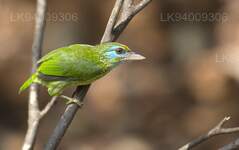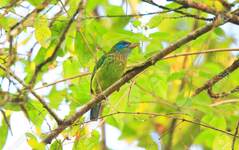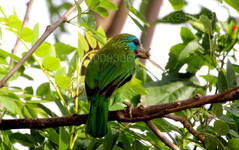
Endemic Birds
Sri Lanka boasts a remarkable array of endemic birds, including the vibrant Sri Lanka Blue Magpie, the elusive Sri Lanka Whistling Thrush, and the striking Sri Lanka Junglefowl. With diverse habitats, the island fosters a unique avian biodiversity, making it a haven for birdwatching enthusiasts and conservation efforts.
Yellow Fronted Barbet
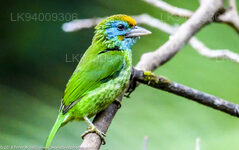
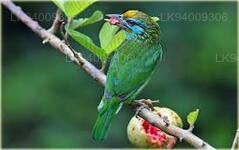
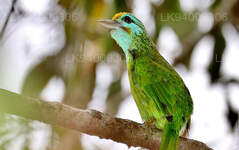
Sri Lanka Yellow-fronted Barbet "Megalaima flavifrons" (Cuvier, 1817)
The Yellow-fronted Barbet is easily distinguished by its yellow forehead and blue face. It differs from other members of the family by having fewer bristles at the corner of the mouth and a shorter bill in proportion to its width at the base. While plumage is alike in the sexes (except that the yellow patch at the base of the bill is larger in males), females are rather smaller than males. The young have streaks on their backs; adults measure around 22.5 cm in length.
This is the commonest barbet of the hill country at altitudes between 1,000 and 2,000 meters in the wet zone. The species range extends also to the low-country wet zone, and suitable damp areas of the dry zone. The Labugama and Kalatuwawa forest reserves are among the closer places to Colombo in which these birds are regularly sighted.
Yellow-fronted barbets generally occupy mid and upper layers of the forest canopy. Their call commences with a kow o wo ow ow ow ow and changes to kuiar, kuiar, kuiar repeated many times. They then fall silent for much of the day, beginning to cry out once in the evening., During feeding, however, the birds fall silent, a number of birds often being seen feeding on the same fruit tree. Yellow-fronted barbets are regular members of the mixed-species feeding floc at Sinharaja, and presumably feed on insects.
Breeding takes place during two marked seasons; March to May, and August to September. Both birds excavate the nest chamber. The chamber entrance is usually 3 – 6 meters above the gr sometimes higher. The diameter of the entrance is about 25 cm, the chamber depth being .5 cm. No nesting materials are used, and up to three pure white eggs. Both parents participate in incubating the eggs and feeding the young.

